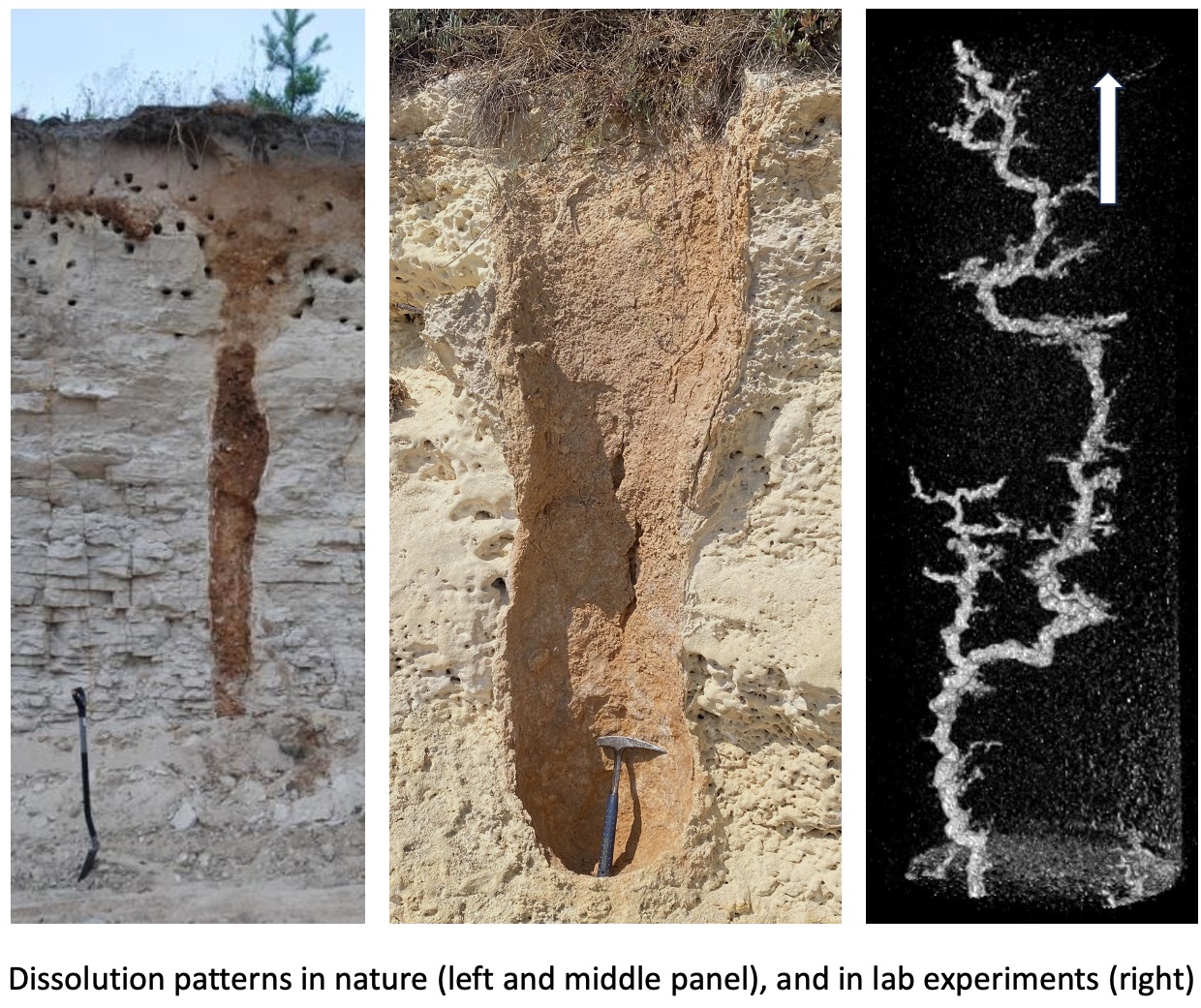Dissolution patterns
Pattern formation in nature is a ubiquitous phenomenon which is observed in a variety of systems, with examples ranging from bacteria colony growth in biology to river networks and mineral dendrites in geology to Rayleigh-Taylor fingers observed in the Crab Nebula in cosmology. In geology, another example of pattern formation is dissolution patterns, which are the result of chemical erosion (dissolution) of carbonate rocks by a reactant. Dissolution is a highly non-linear process in which the interplay of flow, reaction and transport give rise to dissolution instabilities, which, in certain physical conditions, can evolve into distinct finger-like shapes. The figure below shows the dissolution fingers or solution pipes observed in Smerdyna, Poland (left) and Apuglia, Italy (middle panel). The right panel shows a wormhole in laboratory experiments. Note that the laboratory wormhole is only 11cm long compared to the natural patterns, whose size is in meters.

posted at: 20:55 | permanent link